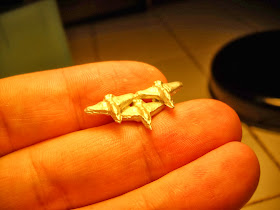I've heard it said that one should be careful about what a boy gets into at age 13, because he'll be stuck with it as an interest for the rest of his life. For me, I turned that age in 1983, which was a pretty important year for the gaming hobby, as the D&D boom was still going strong, if tipping into the downslide at that time. Among the important releases that key year:
- The D&D Red Box Set by Frank Mentzer. It's not "my" version of Basic D&D, but I know that it escorted many new players into the game, so for that I have to be thankful.
- The Greyhawk boxed set, expanding the earlier folio with more game-able information, which I had on my wall, and set almost all of my adventures in, for many years.
- D&D modules X4 and X5, the Master of the Desert Nomads series, which for all its playability flaws, has among the most epic set-flavor of any wilderness modules ever. I can still remember reading it on Christmas afternoon 30 years ago this week, on the couch at my grandmother's during the big family gathering, feeling like I had been hit by a thunderbolt.
- Walt Simonson's legendary run on the Mighty Thor comic began, with its arcane mix of mythology, Nordic adventure, superheroism, and Kirby-esque cosmic space opera. (Some argue that this was simply the best comic series of all time.)
- Somewhere at TSR, the Marvel Super Heroes roleplaying game was working its way through production channels, to be released the next year.
- Doug Niles' Star Frontiers: Knight Hawks game was released, completing the Star Frontiers set and allowing us to roam and fight for the stars themselves. (And had sufficient legs as to be cross-referenced by other TSR games like MSH for spacefaring rules.)
I think that in the mid-80's, Doug Niles may have been about the strongest actual game designer that TSR had producing work for them. His Knight Hawks game really hit all the right notes, I think, and it's taken about three decades years of tinkering with it to really see any flaws, and they still don't bother me very much. (That's high praise.) Likewise, his Battlesystem mass warfare rules were almost-but-not-quite-incredibly-good, a much-needed improvement over the Swords & Spells and Chainmail games that didn't really synch up with D&D anymore, the way it had evolved. It made a big splash, and you can tell that the guy cared deeply about the work with the revisions he made in the follow-up edition. (If not 1983, then the runner-up for most important year in gaming for me would be 1985, with the release of Battlesystem, supplements for Marvel Super Heroes, publication of Unearthed Arcana, and the departure of Gygax from TSR.)
So anyway, these 52 Saturdays are almost-but-not-quite everything that I have to say about the game at the moment. I don't plan to be posting every Saturday anymore, although there may be occasional game reports, and perhaps one last project that I didn't get to complete by the end of the calendar year. You'll see a shift back to more actual D&D-related posts (as per the name of the blog, after all) that I somewhat got away from in recent months.
In a rather beautiful piece of serendipity, just yesterday I received in the mail the limited-edition Star Frontiers 30th Anniversary Commemorative Patch from TerlObar, which is a rather beautiful piece, featuring the Assault Scout design in which all of our PCs would fly around to adventures (and hopefully not instantly blow up in a fight). I'm immediately going to put it on my backpack that I carry to school and class every day, sweet. (There are still some available for ordering at the link above.)
And one last thing: The 13-year old me would stand in the hobby store at the mall across the state line and stare rather longingly at the brightly-colored boxes of spaceship miniatures for the game, wishing that he had the money to purchase them. Maybe two decades after that I got those boxes on EBay, but still didn't have the gumption to actually tear them open and assemble and paint them. So when I started this year I had zero actual Star Frontiers: Knight Hawks miniatures on my shelf to play the game with. Now I'm happy to say that's been greatly rectified; below you'll see a photo of my overall combined fleet. Both the 13-year old me and the current actual me stand in agreement in saying "pretty cool"!
Thanks for reading this stuff and your thoughtful comments are always appreciated. Hope you and your loved ones are safe, happy, fulfilled, and get even better in the new year. Have some good holidays and we can plan to read each other again in 2014.










